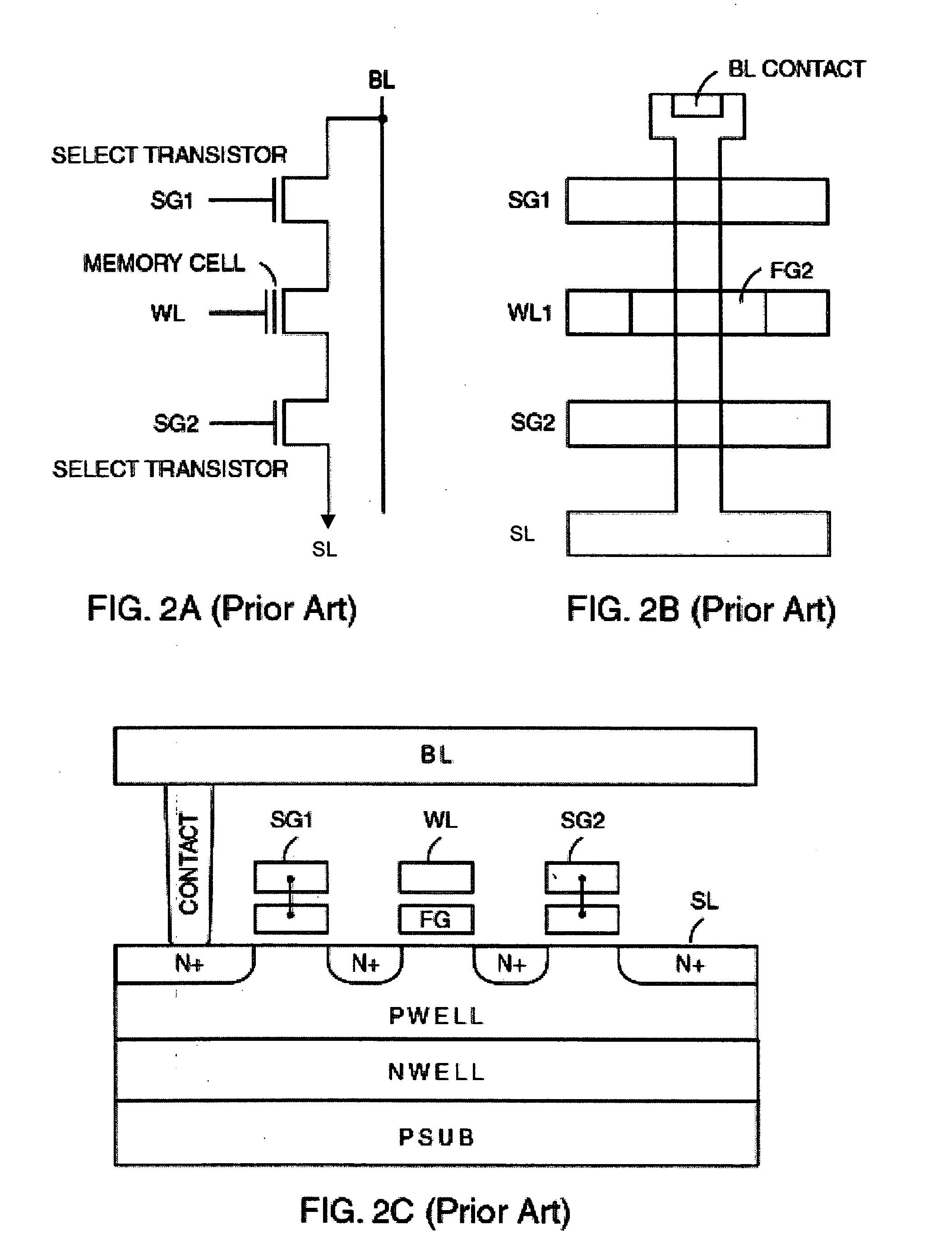Novel monolithic, combo nonvolatile memory allowing byte, page and block write with no disturb and divided-well in the cell array using a unified cell structure and technology with a new scheme of decoder and layout
a nonvolatile memory and combo technology, applied in the field of combination nonvolatile memory and a novel embedded memory, can solve the problems of large overhead in the cell array area, the 2tr-flotox eeprom suffers a big penalty in cell size and cell array area, and the traditional flash memory is less flexible than. , to achieve the effect of reducing the area-consuming divided triple-well, superior combo, and nonvolatile memory
- Summary
- Abstract
- Description
- Claims
- Application Information
AI Technical Summary
Benefits of technology
Problems solved by technology
Method used
Image
Examples
Embodiment Construction
[0076] The present invention is a novel combo nonvolatile semiconductor memory and embedded memory that employs several new schemes of byte-wordline decoders and unique layout techniques associated with an unified, highly-scalable BN+S / D (Source / Drain) cell architecture with the same process for integrating FLASH, EEPROM and ROM into one monolithic chip. The present invention will be described below in detail with reference to the accompanying drawings.
[0077]FIG. 1A, FIG. 1B and FIG. 1C illustrate a circuit schematic, top view of layout and the cross-sectional view of a prior art of conventional 2Tr-FLOTOX EEPROM cell. The 1st transistor is a n-channel select transistor with its gate connected to SG, drain connected to metal1 (1) bitline BL and source connected to the floating-gate, two-poly nonvolatile memory transistor with tunneling oxide surrounding by BN+ as shown in FIG. 1B. The tunneling oxide thickness is designed to be around 100A and will have a FN-tunneling effect when 1...
PUM
 Login to View More
Login to View More Abstract
Description
Claims
Application Information
 Login to View More
Login to View More - R&D
- Intellectual Property
- Life Sciences
- Materials
- Tech Scout
- Unparalleled Data Quality
- Higher Quality Content
- 60% Fewer Hallucinations
Browse by: Latest US Patents, China's latest patents, Technical Efficacy Thesaurus, Application Domain, Technology Topic, Popular Technical Reports.
© 2025 PatSnap. All rights reserved.Legal|Privacy policy|Modern Slavery Act Transparency Statement|Sitemap|About US| Contact US: help@patsnap.com



